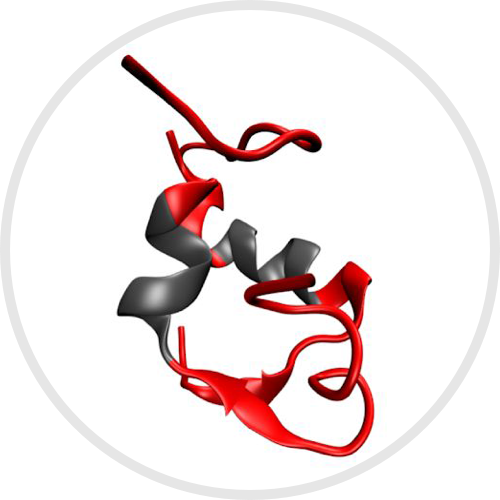Biochemistry and Molecular Biophysics
Kyle’s research focused mainly on two projects spanning biochemistry and molecular biophysics. These guided Kyle through the theoretical and experimental philosophies, concepts, and methods that reinforced his passion for this branch of science. “The molecular scale unveils life’s unappreciated definition as an unstable, electronic system. This perspective keeps me hooked, and the purpose keeps me going.”
Temperature-Resistant Insulin Storage
Kyle developed strategies for temperature-resistant insulin storage with Dr. Gerrick Lindberg. Insulin, the predominant treatment for diabetes, can expire twice as fast if it is not stored in the refrigerator. This causes medicinal and financial disparities in areas that have poor access to electricity. By instructing a supercomputer to predict likely trajectories of insulin molecules in liquid salts, Kyle extracted molecular details that support or oppose the use of these liquids as temperature-stable preservatives.
The most common mode of insulin expiration is self-assembly into a dimer and hexamer. Each color, with the exception of dark gray, represents an individual insulin monomer. The gray residues are self-recognition elements (SREs), which are important factors in the self-assembly of insulin.
Molecular details relevant to the pursuit of temperature resistant storage include the amount and stability of helices present in the structure due to the positive correlation between helicity and hexamer dissolution rate, density of liquid salt relative to the SREs due to steric effects that may block insulin molecules from binding each other, intramolecular distances that indicate high bioavailability and possible reinforcement of the desirable structure, and free energy landscapes as a dimer is manually pulled apart to observe the energetic boundaries of aggregate dissolution in each of the liquid salts.
Diet-Derived Abnormalities in Zebrafish
Kyle elucidates on the developmental time frame and prevention of skeletal abnormalities that arise from a widely used zebrafish diet with Dr. Matthew Salanga. Although zebrafish are the third most used scientific animal, we do not truly know what is healthy for them. Solving the mechanism behind these abnormalities will therefore increase consistency across experiments involving zebrafish and contribute to the small knowledge-base of zebrafish nutrition.
A well-established method in quantifying skeletal morphology begins with whole-mount bone staining (shown below). Kyle then measures the curvature and length of the spine and compares these metrics across groups of variably conditioned fish.


To determine if the juvenile developmental stage is exclusively responsible for the defects, a group of fish was fed a nutritionally sufficient food until adulthood and then switched to a nutritionally deficient food. Since defects were still significantly observed in comparison to controls, it was concluded that the molecular mechanism compromised is not exclusive to the juvenile stage.
Discovering which the sufficient food is needed to prevent the deficient food, a gradient of ratios of the diets was spread across several groups of fish. The ratio at which the defects were insignificant to negative controls may be compared to known ratios of ingredients to identify possible ingredients that may be responsible for the defects.
Building a Man of Science
Kyle will be joining the Biochemistry and Molecular Biophysics program at the University of Chicago in the Fall of 2020. Here, he hopes to utilize the methods applied in the aforementioned projects to research project design. Kyle strives for a career in academia, where he will research and develop non-natural protein functions.







